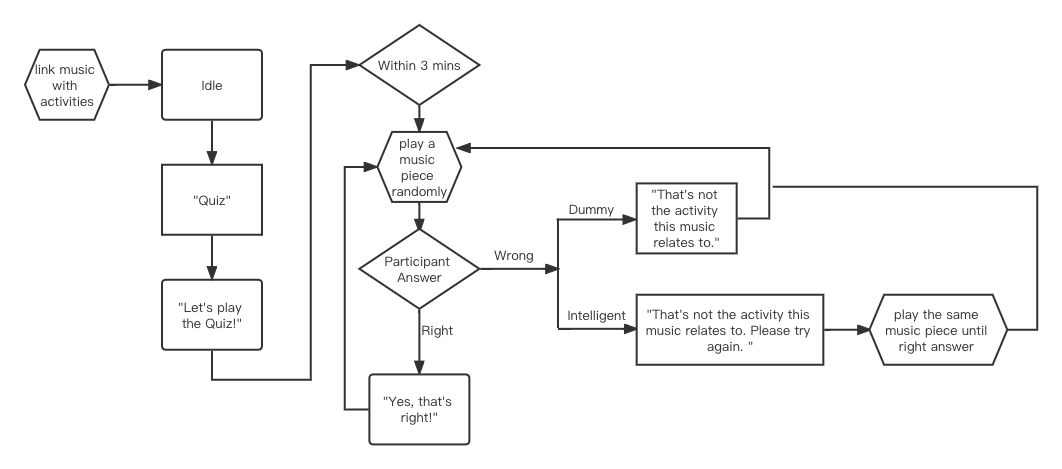Prototype
Last modified by Xinqi Li on 2022/04/02 01:56
We created two prototypes for the control-group evaluation, the dumb and the intelligent robot. These two robots are created to simulate the real situation and help to evaluate the intelligent robot's ability of helping remember the task.
Differences between two robots
- The intelligent robot: The Intelligent robot would inform the participants of the correct answer when they gave a wrong one. This is simulating our use case 5, assuming the quiz can help PwDs enhance the memory between music and activities.
- The dumb robot: The dumb robot can not correct the answer, which is trying to simulate the daily scenario that the robot only reminded the daily task but they had no idea whether PwD did the correct task and participants have no method to strengthen the intrinsic knowledge.
Evaluation Prototype
The intelligent robot
- The robot starts and waits for the instructions.
- The participant says "Quiz!".
- The robot says "Let's play the Quiz!", plays a random music piece, asks "what activity does this music relate to?" and waits for the response.
- The participant answers,
3.1 If the answer is correct, the robot would reply "Yes, that's right!" and continue the next music.
3.2 If the answer is wrong, the correct robot would reply "That's not the activity this music relates to. Please try again!" and repeat the same music until it gets the correct one.
The dumb robot
- The robot starts and waits for the instructions.
- The participant says "Quiz!".
- The robot says "Let's play the Quiz!", plays a random music piece, asks "what activity does this music relate to?" and waits for the response.
- The participant answers,
3.1 If the answer is correct, the dumb robot would reply "Yes, that's right!" and continue the next music.
3.2 If the answer is wrong, the dumb robot would reply "That's not the activity this music relates to." and continue the next music.
